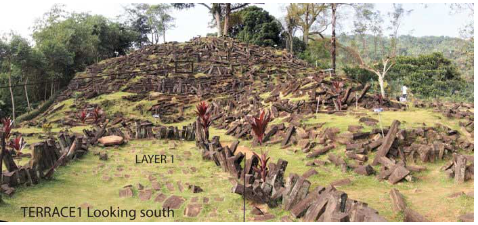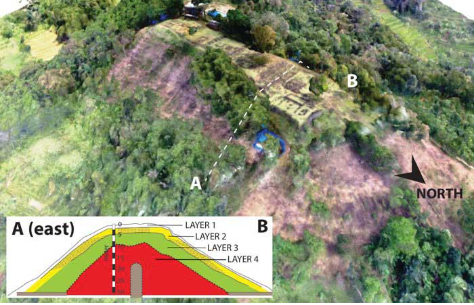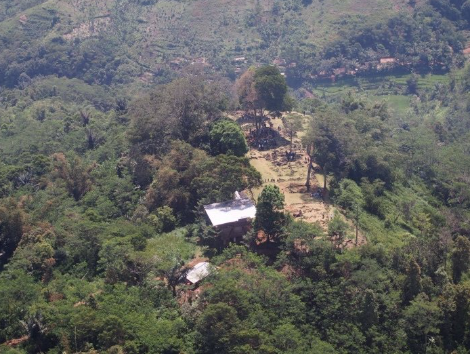
Gunung Padang was initially discovered by Dutch colonists in the early 20th century, and its awe-inspiring surrounds of old stone must have left them speechless.
The ruins of a gigantic complex of rocky monuments and constructions are scattered across a broad hilltop in the Indonesian province of West Java. This archeological wonder has been regarded as the largest megalithic site in all of Southeast Asia.
However, those pioneers could never have imagined that the greatest marvel of all time may be tucked away, buried far beneath the surface of the earth.

A group of Indonesian scientists presented data to support their controversial new research, which they presented at the AGU 2018 Fall Meeting in Washington, DC, last week. They claimed that Gunung Padang is, in fact, the location of the oldest known pyramid-like structure in the world.
Based on years of investigation, their findings indicate that Gunung Padang is not the hill we believe it to be, but rather a layered complex of prehistoric buildings whose foundations date back at least 10,000 years.
According to the authors’ abstract for their new poster, “Our studies prove that the structure does not cover just the top but also wrap around the slopes covering about 15 hectares area at least.”
“The structures have deeper roots than just being surface level.”
With the use of a variety of surveying techniques, such as seismic tomography, ground penetration radar (GPR), and archaeological digs, the team has shown that Gunung Padang is actually a sequence of many layers constructed throughout successive prehistoric times rather than merely an artificial building.
A second layer, located one to three meters below the surface, sits above the uppermost, megalithic layer, which is composed of rock columns, walls, pathways, and niches.
The researchers contend that although this second layer was once mistakenly believed to be a naturally occurring rock formation, it is actually a different configuration of columnar rocks arranged in a matrix structure.
Below this, the lowest (fourth) layer is composed of “lava tongue” basalt rock that has been altered or sculpted by humans. It is topped by the third layer of organized rocks, which reaches as deep as 15 meters and contains sizable subterranean caverns or chambers.
The first layer may be as old as 3,500 years, the second layer may be as old as 8,000 years, and the third layer may be as old as 9,500 to 28,000 years, according to the researchers’ initial radiocarbon dating results.

The researchers, under the direction of geophysicist Danny Hilman Natawidjaja of the Indonesian Institute of Sciences, hypothesize that the ancient pyramid may have had a religious function in regards to the reason behind these enormous, ancient structures.
Natawidjaja said, “It’s a unique temple,” to Live Science.
That’s conjecture for the time being, but if the researchers’ other assertions regarding the structures prove to be accurate, it’s a significant discovery that may call into question ideas about what archaic societies were capable of.
In 2013, Natawidjaja said to The Sydney Morning Herald, “It’s huge.” “This monument disproves the notion that the prehistoric era was primitive. People think otherwise.”
Not everyone is persuaded, though. In Indonesia and internationally, Natawidjaja’s research has generated a great deal of debate, with many archaeologists and skeptics questioning the team’s methodology and conclusions.
The most recent scientific presentations—which are now unreviewed by peers—will undoubtedly fan the flames, but they also offer a deeper look at what may be one of the oldest and most enigmatic structures on Earth.
We’ll never know for sure what that building is in reality.
